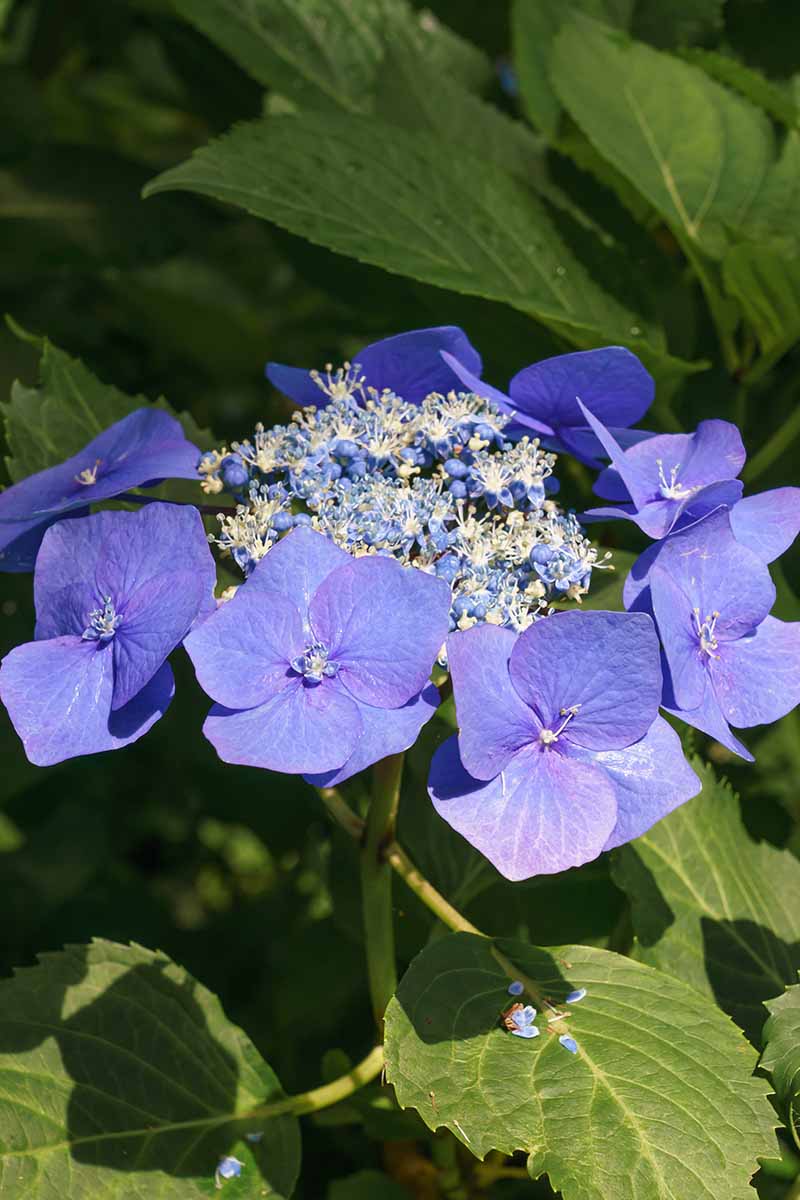
How to Grow Lacecap Hydrangea
Your complete guide to planting, growing, and caring for these elegant flowering shrubs
Introduction to Lacecap Hydrangeas
Lacecap hydrangeas are distinguished by their unique flower clusters that feature a flat center of tiny fertile florets surrounded by a ring of showy sterile florets. This creates an elegant, lacy appearance that adds refined beauty to any garden.
Unlike their mophead cousins with their full, rounded blooms, lacecap hydrangeas offer a more subtle and sophisticated look that many gardeners prefer for their natural, wildflower-like charm.

The distinctive flat flower clusters of lacecap hydrangeas
Lacecap Hydrangea Quick Facts
Light
Morning sun with afternoon shade; dappled light under trees is ideal
Water
Consistent moisture; 1-2 inches per week; avoid letting soil dry out
Soil
Rich, well-draining, organic matter-rich soil; pH affects bloom color
Size
Typically 3-6 feet tall and wide, depending on variety
Hardiness
USDA Zones 5-9; some varieties tolerate Zone 4
Bloom Time
Summer to fall; typically June to September
Popular Lacecap Hydrangea Varieties

Hydrangea macrophylla ‘Bluebird’
Features deep blue flowers (in acidic soil) with a ring of large sepals surrounding smaller fertile flowers. Known for exceptional cold hardiness.

Hydrangea serrata ‘Mont Aso’
A compact variety with delicate pink flowerheads in alkaline soil or blue in acidic soil. Features attractive fall foliage in burgundy tones.
:max_bytes(150000):strip_icc()/growing-lace-cap-hydrangea-5078423_4-45cf65304ff34ba1b5b687bef5973325.jpg)
Hydrangea macrophylla ‘Lanarth White’
Elegant white flowers that aren’t influenced by soil pH. The center fertile florets are cream to light green with pure white outer sterile florets.

Tuff Stuff Ah-Ha™
A reblooming mountain hydrangea with large lacecap flowers and hardier flower buds that resist late spring frosts. Perfect for colder regions.
Planting Guide
When to Plant
Early spring or fall are ideal planting times. Spring planting gives the shrub time to establish before summer heat, while fall planting should be completed at least 6 weeks before the first frost.
Choosing a Location
Select a spot with morning sun and afternoon shade. Too much sun can cause wilting and scorched leaves, while too little light results in fewer blooms. Protect from harsh winds that can damage stems.
Soil Preparation
Prepare a hole twice as wide as the root ball but only as deep. Amend soil with compost or well-rotted manure. Lacecap hydrangeas prefer rich, well-draining soil with plenty of organic matter.
Spacing
Space plants 3-5 feet apart depending on the mature size of the variety. This allows for proper air circulation and room to grow to their full potential.






